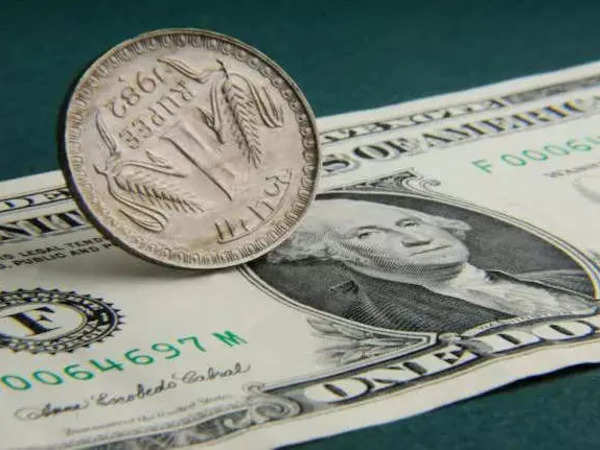
The Indian rupee hit an all-time low against the dollar this Monday. Exactly one year ago, you could’ve got a dollar by forking over just 73.50 rupees. But now, if you want to buy one dollar, you need to hand over 77.58 rupees — our currency has lost 5% of its value in a year!
Currency fluctuations like these are pretty commonplace. Because like any other commodity, currencies also have a marketplace where people buy and sell. And just like in any other market, demand and supply dictate how prices fluctuate.
To put it in the Indian context, whenever the demand for the Indian rupee is high and it’s in short supply, its value rises. On the other hand, if the demand is low and supply is high — the rupee’s value drops.
So, what’s happening today?
Well, some of it has to do with the global pandemic. When the pandemic struck in 2020, economies were devastated. Companies were on the verge of bankruptcy and millions of people lost their jobs. And, governments and central banks, especially in the developed world, saw only one way out of it — print more money! They wanted to put this money in the hands of people and they hoped that it would revitalize the economy. And it did, at least to a certain extent.
But some of that money also made its way outside the walled garden. For instance, money printed by the US Federal Reserve didn’t just stay inside the US. Some of it made its way into India. In fact, some believe that this is what eventually helped prop up the Indian markets. We received foreign inflows of over $30 billion in 2021. And according to the Economic Survey, India was one of the few countries where foreign investors pumped more money than they took out.
In any case, once the dollar inflows hit our shores, they’re usually traded for rupees. And as a consequence demand for rupees skyrocketed. So much so that the currency actually gained value — about 3%.
And, what happened to all the dollars?
Well, the RBI went on overdrive and started stocking up. They amassed a whopping $640 billion of foreign exchange reserves. Think of these reserves as insurance of sorts if things go downhill. That is, if the rupee were to lose value precipitously, then the RBI could start selling some of these reserves to stop the fall.
And, it looks like they may have to intervene at the moment. Because the US Federal Reserve is reversing some of its pandemic-era policies. It is increasing interest rates and also trying to suck back the excess money it once printed. And as a result, dollars are flowing out of India. In fact, foreign investors have pulled out $21.5 billion from the Indian stock markets in the past 6 months. So now we have a lot of rupees floating around and its value has deteriorated quite a bit.
And as we already noted, it isn’t all that bad just yet. But if it continues along this path, then it will get problematic. Because — inflation!
You see, as a country, we import a lot of stuff. Expensive stuff like oil. If the rupee falls in value, we now have to shell out more money to buy the same stuff. And this higher cost is eventually passed on to consumers like us. In fact, as per the RBI, almost every 5% fall in the Indian rupee increases inflation by 0.15%.
And the RBI most certainly can’t let that happen! Inflation is already running amok in the country and we can’t “import” more inflation. So, after having built up a massive war chest of forex reserves, the RBI is putting it to use.
How? Well, remember the basic demand-supply equation, right? In this case, the RBI can sell the dollars from the forex reserves and buy Indian rupees. It mops up the excess supply and helps stabilize the value of the currency.
And, it seems they have been dabbling in this sort of currency management for a while now. Our forex reserves have already fallen by over $40 billion — to $597 billion! And, while the road ahead might be bumpy for the rupee, hopefully, RBI’s massive war chest can come in handy to prevent a calamity.







